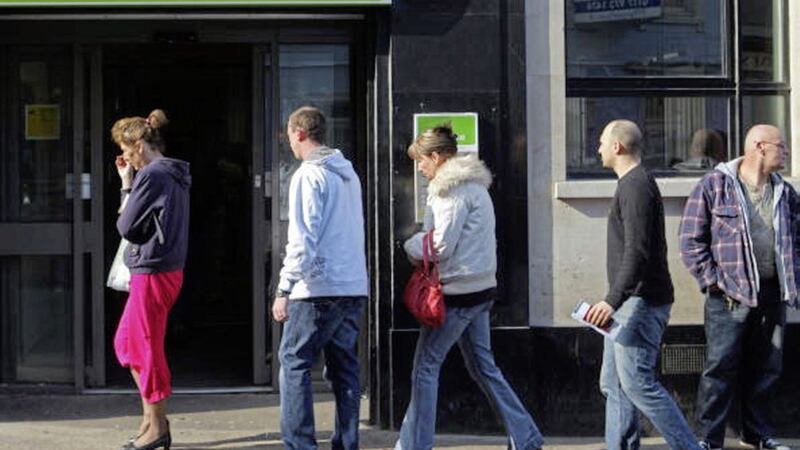UNEMPLOYMENT in Northern Ireland has fallen to its lowest level on record, the latest government figures reveal.
The Labour Force Survey, which covers the first three months of the year shows that the unemployment rate is now 3.1 per cent, down 0.8 per cent on the previous quarter and 2.1 per cent over the year. It is the lowest since records began in 1995 and remains below the UK average (4.2 per cent).
The number of those in employment has increased according to the figures, with the the rate of 69.7 per cent a jump of 1 per cent over the quarter and 1.3 per cent over the year. Crucially though it remains the lowest out of all UK regions. The rise in the Northern Ireland rate comes as the UK recorded the highest level of employment since records began of 75.6 per cent.
The economic inactivity rate, an area of long-standing concerns within the north's economy, dropped marginally over the year (0.3 per cent) and the quarter (0.4 per cent) to 28 per cent, but remains significantly above the UK average of 21 per cent.
The labour market statistics also show contrasting performances in relation to gender, with females driving the improvement in the figures.
The number of females unemployed more than halved over the last year with the unemployment rate plumbing a fresh record low of 1.8 per cent in the first three months of the year, while employment hit a record high of 67.1 per cent. By contrast male inactivity has jumped by 6 per cent over the past year, and is particularly prevalent among young males, aged 18 to 24, with the rate rocketing to a record high of 43.9 per cent.
Ulster Bank chief economist, Richard Ramsey said the positive headlines present a "superficially positive"picture of the labour market and concealed key weaknesses.
"Longstanding challenges related to economic inactivity, job quality and productivity remain.Whilst there has been some improvement with falling economic inactivity in recent years concerns linked to job quality and poor regional productivity are intensifying. As a result, Northern Ireland finds itself increasingly stuck in a low wage / low economic growth model. The latter will not produce higher levels of economic prosperity and cannot be compensated by a (flattering) low unemployment rate."
FSB Northern Ireland policy chair, Tina McKenzie believes the high economic inactivity rate requires "immediate attention".
"While it is welcome that economic inactivity has decreased over the quarter, significant action is required to address the issue," she said.
“It is vital that people who can work have a pathway back to employment, so businesses can access the skills they need, and the prosperity and wellbeing of our citizens can increase.”
Last month the number of people receiving unemployment benefits was 29,000, representing 3.2 per cent of the workforce and a marginal increase on the February figure. There were 308 confirmed redundancies in April, the highest monthly total since November 2016, while there was a decrease of approximately a third in the number of confirmed redundancies (2,067) over the year to April 30.








